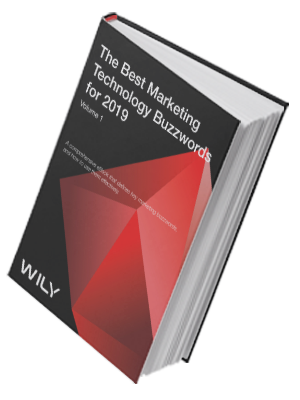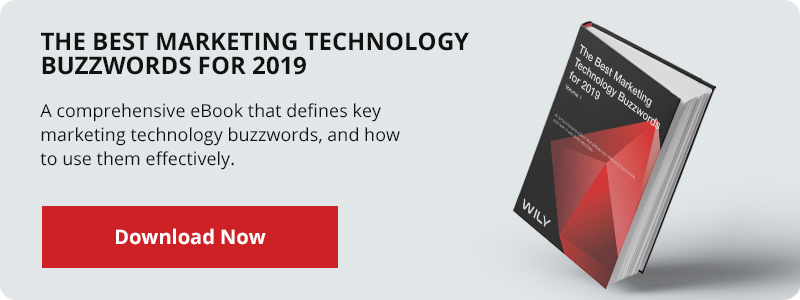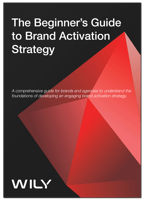If your business focuses on engaging consumers and acquiring data, then it’s important to consider...
Five Quick Tips About Data Activation for Creative Marketers
 Today, marketers are spending over $6BN a year on data-driven targeting solutions like data management platforms (DMPs) and demand side platforms (DSPs). However, the majority of marketing teams are not yet fully activating their data.
Today, marketers are spending over $6BN a year on data-driven targeting solutions like data management platforms (DMPs) and demand side platforms (DSPs). However, the majority of marketing teams are not yet fully activating their data.
In fact, according to research by AppNexus, up to 97% of programmatic campaigns lack a targeted creative for each audience segment. This means that the majority of marketing messages are generic and untailored to their target audience. Consumers are constantly bombarded with marketing content daily, and lack of creative customization means your messages are most likely being ignored.
The next stage is activating marketing data through creative and not just media. Data strategists and creatives must now align their goals to effectively activate their data. They must create content that is data-driven and also customized for the right audience. This means that creatives can rest assured that their value within an organization is more integral than ever; but they’ll have to adapt to this new data-driven reality.
 Source: AppNexus
Source: AppNexus
So, what are some tips about data activation that creatives can learn, in order to better serve their teams? Here are 5 quick tips to consider when activating your data, and how creative content plays a major role:
Charting the Course with Journey Mapping
While dynamic creative is powered by data, it still requires a human touch to be effectively executed. Technology allows us to capture audience data and insights in order to design more relevant messages at the right time. Marketers must be able to take a strategic approach to the data they receive. They must be able to consolidate and make sense of data, and make strategic decisions based on this. However, data needs human strategy analysis and an always-on vision.
Marketers must take the time to build and understand accurate customer profiles, or personas, based on the data they receive. They can then make assumptions based on those profiles, verify them, and then make adjustments along the way. Journey mapping helps creatives trace the steps that a customer takes in engaging with an experience, by combining visualization, data and insight. Here some free customer journey mapping templates to get you started.
Let Data Guide Creative, Not Control It
Data collection is integral to guiding your creative strategy. So, creatives, listen up during those kick-off meetings. Your creative team’s first attempt should not be a stab in the dark. Relevant data will help you to come up with a creative brief that you can feel confident in. They should know about your audience, what you hope to learn, and how you’re measuring success. Coming to the table with data-driven insights doesn’t hinder the artist’s inspiration, it can often trigger it. At the same time, don’t let data dictate everything about your creative strategy.
Expert digital marketing strategist, Jay Bear explains it best,
Creative marketing should tap into people’s emotions, play into popular culture, and break through the clutter, but when marketers concentrate too much on optimization, they overlook creative considerations and ideas that can have serious returns. It’s like focusing on defense at the expense of an offensive strategy.
Determine What Your Goals Are, and Optimize
By setting goals, brands can determine the channels and ad units they must purchase. In turn, they can produce creative that will shine for that purpose. For example, to generate awareness for a new product on Facebook and Instagram, a memorable photo, video or Canvas ad can go a long way.
Authentic content will always be desirable to consumers. When a brand has important goals for growth in mind (increasing sales, etc), it’s important to remain true to a broader brand purpose.
The future is bright for content and marketing automation will only help make our connections smarter and more strategic. Artificial Intelligence will be a huge game changer, delivering algorithms that allow marketers to proactively learn from data patterns and optimize in real-time. It will not replace creativity but instead augment it, helping teams to uncover insights faster and more accurately, then act and implement these insights faster. It’s better to think of AI as IA (Intelligent Assistant).
Customize Messaging with Dynamic Creative
Dynamic creative changes automatically based on information about the user. It’s a great way to link passions, emotions, attitudes, and ideas to data to better connect with audiences. The beauty of this model is that we can tailor it by audience, so that we are building the most engaging content wherever possible. For example, beauty and CPG brands can easily provide greater value by targeting relevant users with immersive content and “how-tos.” Beauty brands that include data-driven content with sequential storytelling across the customer journey see a significant increase in engagement, sales, and efficiency.
This means that creative teams must be ready to craft an arsenal of different copy and imagery for marketers to optimize with. Here some examples of dynamic content that explain how data drives creative.
Test Your Creative, And Course Correct
Data from digital campaigns allow brands to avoid expensive creative production costs. The rapid test-and-learn capabilities, as well as the breadth of data signals offered by online advertising platforms, allow marketers to focus spend on top-performing creative, deliver personalized and relevant content to their customers, and maximize returns on their non-working media dollars.
Brands that track towards online goals, such as online sales or video engagement, can run media at low levels of spend to test creative variations against prospecting audiences and identify top-performers. You can then strategically scale spend against top-performing variations of your creative. According to SocialCode data, campaigns that pre-test content are 20-25% more efficient.
Keep in mind that although data is an integral part of executing a successful marketing campaign, the key is quality content, and creativity. The ability to target and segment the right consumers is important, but if the creative doesn’t resonate with your target audience, data is useless.
 eBook: The Best Marketing Technology Buzzwords You Need to Know in 2019
eBook: The Best Marketing Technology Buzzwords You Need to Know in 2019
As marketing continues to lean heavily on digital technology and automation for success, buzzwords and phrases will only continue to grow in complexity. In Volume 1 of this comprehensive book, you will understand the ins-and-outs of the most up-to-date marketing buzzwords, and how marketers can effectively use these terms in the workplace, and in every day use.
WHAT’S INSIDE:
- Diction 101: Defining the 30 Most Popular Marketing Buzzwords
- Grammar 201: Understanding Correct Usage of Buzzwords
- Etiquette 301: Effectively Using Buzzwords in Professional Conversations
- Context 401: Hashtags to Follow for Relevant Online Discussions
- Plus, So Much More!




